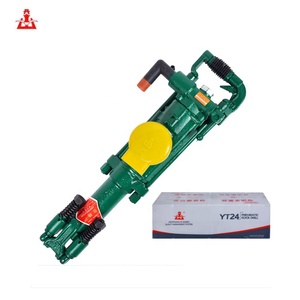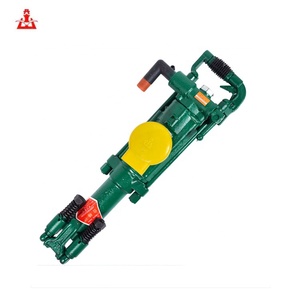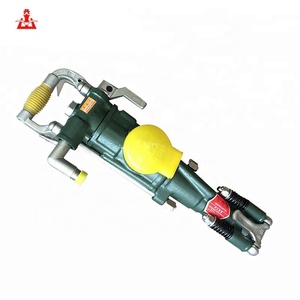
All categories
Featured selections
Trade Assurance
Buyer Central
Help Center
Get the app
Become a supplier

(165 products available)


























A jackleg drill is an equipment used for drilling holes of different sizes in varied rock and soil formations. It is also known as a leg drill, a power drill, or a jack drill. Based on the power source, the jackleg drill can be classified into three types: pneumatic jackleg drill, hydraulic jackleg drill, and electric jackleg drill.
Focus on the performance specifications for drill legs, as these usually have a big impact on the performance of the drill itself. Explain the power requirements for jackleg driller machines. What type and class of hydraulic power does the drill require? Include information about the air pressure requirements for drills operated using air pressure. Include details about the dimensions and weight of standard leg drills.
Since performance specifications depend on the models, operators and manufacturers will be keen to know the features of the specific model. They will need to know whether the drill has a high-speed steel bit, tungsten carbide bit, or any other customized feature. If possible, include a table with the models and their specific features and performances.
The maintenance of jackleg drill machines is an important issue to ensure their long service life. Include details about the segregated lubrication systems and how the components need to be lubricated frequently. Explain why regular lubrication is essential — lower wear and tear on parts, improved operating efficiency, reduced energy consumption, and extended life of moving parts.
Since the drill is used in harsh mining and construction environments, include tips about cleaning it regularly and removing deposits. Keeping the deposits at bay can ensure drill cooling and prevent overheating. Operators may also use compressed air to remove the dust and debris after mining or drilling operations.
Some drilling machines have moisture traps in their pneumatic systems to prevent water from accumulating. Maintenance may require checking these moisture traps and emptying them regularly. For air intake filters, they should be cleaned out regularly too, so the system gets sufficient air.
Jackleg drills are primarily used for making blast holes in rock layers in mining and tunneling work. The rock drill machine can be secured vertically, horizontally, or at an angle when using a jacksleg, which consists of a base and adjustable steel legs. This provides good support for the drill.
Jackleg drills are also used in the following construction applications:
The following factors need consideration when deciding the type of jackleg drill or product to purchase.
Working environment and conditions
Users need to first assess the operational environment in which the drill will work. If the working environment has ample space, a powered drill may be preferred. However, if the mining site is small and heavily constrained, a self-powered drill will function better because it will not require external power to function.
Drill weight
Drill weight is a crucial factor when assessing the suitability of a drill in a mining operation. Users should match the weight of the drill to the type of rock being drilled and ensure that the drill can support the torque and pressure generated.
Employing an ill-matched drill could result in slower drilling speeds and greater equipment wear.
Additionally, the weight of the drill should be such that the drill operator can maneuver and manage it with ease.
The comfort and safety of the drill operator
Operators of jackleg drills face several hazards when drilling, such as noise, vibration, dust, and poor ergonomics, which can lead to musculoskeletal disorders.
When choosing the drill, operator safety and comfort should be paramount. The preferred drills would have features to ensure comfort and safe operation. Such features include vibration isolation, soundproofing, centralized lubrication, and appropriately located controls.
Drilling requirements
The drills available for purchase vary depending on their specifications. Some drills are better for blasthole drilling, while others will be more suitable for exploratory drilling. This variation also extends to drill diameters; some drills will suit large-diameter drilling, while others will be preferable for fine-diameter drilling.
Q1: How powerful is a jackleg drill?
A1: A typical jackleg drill may have power ratings between 8 hp and 12 hp.
Q2: What is the weight of a jackleg drill?
A2: A standard-weight jackleg drill is about 45 to 50 kg. The weight aids controlled drilling and reduces fatigue.
Q3: What are some alternatives to the jackleg drill?
A2: The hydraulic rock drill and the down-the-hole hammer drill are popular alternatives to the jackleg drill.